
Arquivo para a ‘Museology’ Categoria
Myths, primary orality and religions
Myth is a way of explaining phenomena, not only natural, but also cultural and historical, in order to maintain a certain fact that occurred beyond the factual state, orality is a form of communication and religions have a structure of cosmogonies that give the facts a deeper meaning.
not only natural, but also cultural and historical, in order to maintain a certain fact that occurred beyond the factual state, orality is a form of communication and religions have a structure of cosmogonies that give the facts a deeper meaning.
It is necessary to highlight in religions and ancient primary oralities the role of oracles and prophets, who had some “authority” to narrate historical facts so that understanding was maintained and narrative deviations were avoided, and between oracles and sophists there is a distance.
Sophists existed and still exist to elaborate narratives that justify power, even the atrocities and excesses that occur and are often confused with false prophets and oracles of power.
However, myths were necessary countless times in history, the battle narrated in the Iliad and Odyssey in the form of poems, can only imply a narrative of power, however there some myths are used as a way of maintaining a narrative and there was the battle.
As for the religious myth about Adam, it is even possible that it existed, but the human origin is now known from research that there was a variation between Neanderthals and Homo Sapiens, the first ones that disappeared had a more elongated skull and stronger teeth and that were born earlier, which better adapted them to less treated and harder foods.
All we know of the origin of life is the emergence of microbiotics in the early oceans and then small multicellular animals and shells (pictured) in the Precambrian period.
However, very recent discoveries show that not only did they coexist and interbreed, as there are DNAs from Neanderthals that are still present in current humans, but Neanderthals disappeared about 40,000 years ago.
Thus, the Adamic biblical myth must be understood in two ways, the first is that man came from nature (in the biblical narrative of clay) and that somehow, which even science has difficulty explaining, among the lives that emerged in the formation of the biosphere, man was formed, the second explanation is that the children Abel was a shepherd and Cain a farmer, so it is the sociological period that man already cultivates and initiates the “control” of nature.
Primary orality will play a fundamental role in transmitting the “knowledge” that facilitates this control, and myths must signify this primary “control” of nature, as well as oral transmission without deviations.
So what is it to believe?
We already believed many things that were not true,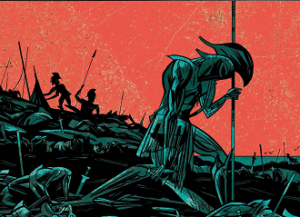 the sun is not the center of our galaxy, at the center is a Black Hole, and both matter and dark energy seem to defy current laws called Standard Physics, a scientist said that God did the division by 0 and everything could have miraculously come out of Nothing.
the sun is not the center of our galaxy, at the center is a Black Hole, and both matter and dark energy seem to defy current laws called Standard Physics, a scientist said that God did the division by 0 and everything could have miraculously come out of Nothing.
If we closely examine the beliefs, in all of them there is the golden rule: do not do to others what you would not want done to you, especially Jesus said about the greatest commandment (Mt 22, 37-40): “You shall love the Lord your God with all your heart, with all your soul, and with all your mind!” This is the greatest and first commandment. The second is similar to this: ‘Thou shalt love thy neighbor as thyself’. All the Law and the prophets depend on these two commandments.”
Without this, we fall into an eye for an eye, a tooth for a tooth, said the philosopher Byung Chul Han about one of the inaugural books of our era, the poem Iliad (8th century BC) (in picture image of the Pablo Delgado), its first word is “menin, namely cholera [Zorn] : “sing, goddesses, the wrath of Achilles son of Peleus” (p. 22), thus human culture, especially Western culture, is founded on violence and the philosopher points out that ‘the disintegration of today’s society does not cease to exist the epic energy of rage.” (pg. 23).
The divine opposition of pacifism is not just a historical inversion, it is in this moment of civilizing crisis the real possibility that the process advances and that humanity does not massacre itself.
It is true that there is not even a correct view of Deus Homo Jesus, he was not a warrior, a miracle worker and if he did so he always asked for discretion, he never did so by an exhibitionist or triumphalist act, he did not stimulate any type of anger, even that the falsehood of many religionists irritated him, and he always asks the disciples: “who do they say that I am”.
In Matthew 16, 14 after asking this: they replied: “Some say that he is John the Baptist; others, that it is Elijah; still others, that it is Jeremiah or one of the prophets”.
And then they are asked why only true disciples recognize Homo Deus love and mercy (Mt 16:16) and Peter replies: “You are the Messiah, the Son of the living God”.
As in the time of Jesus and throughout history there have always been false prophets and disciples, but Jesus warns that it is only from the good tree that good fruits sprout, so the distinction is simple.
Han Byung-Chul (2018) No Enxame: Perspectivas do digital (“In the swarm: Perspectives of the digital”), trans. Lucas Machado, Br, Petrópolis: Vozes.
Theophany existed, does it?
When we have a clarification or an insight we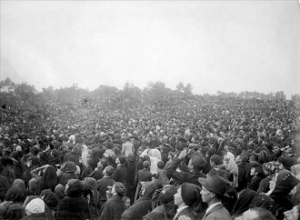 can say that there is a re-velation, something new emerges, but we still don’t have a final or total idea about a given mystery.
can say that there is a re-velation, something new emerges, but we still don’t have a final or total idea about a given mystery.
It cannot be confused with sentimentality or even a very strong emotion, it can be revealing (in the sense of revealing again) but the consequences and the ultimate end of that emotion will depend on other new revelations, they are temporal affects and emotions.
Unveiling is something much deeper, it means taking the veil off, science itself has evolved throughout history, the so-called “structures of the scientific revolution” by physicist and philosopher of science Thomas Kuhn, in another line, Karl Popper developed the idea of method falsifiability, which is always to be aware of the limitations of scientific theories.
Unveiling means not restricting oneself to the material, empirical and quantitative aspects of reality, it aims to rationally understand the real entity as a whole from its ultimate causes, so temporal causes and affects are not at stake, that is, it is not revelation.
It is possible to unveil mysteries through scientific paths, the quantum ideas since Werner Heisenberg (The part and the whole), passing through Einstein (Theory of Relativity) and Neils Bohr who wrote about the correspondence theory (atoms and radiation): “it seems to be possible throw light on the immense difficulties, by trying to draw an analogy between the quantum theory and the ordinary theory of radiation, as closely as possible”, later the model advanced.
In the unfolding of the biblical narrative, a theophany takes place, a divine manifestation where no human explanation is reasonable and there is some “eternal” truth that confirms it.
In the biblical-historical path that we travel from the exodus, there is a passage from the Theophany (Ex 40:34-35): “Then the cloud covered the Tent of Meeting and the glory of the Lord filled the sanctuary. Moses could not enter the Tent of Meeting, because the cloud remained over it, and the glory of the Lord filled the entire sanctuary”.
This also happens today, are there manifestations and theophanies? Yes and even religious institutions doubt it, and they have nothing to do with false prophecies with vested interests.
I read a book in my youth by an Indian yogi and guru Paramahansa Yogananda, in which he described a person he met in Germany who ate only a consecrated “host” and did not look weak or sickly, also a hero of the unification of Switzerland, Nicholas de Flüe (1417-1487) lived out the end of his life like this, with the permission of his family and wife.
The Jewish photographer Judah Ruah from “Fatima Miracle”, from a traditional Jewish-Portuguese family, published a photo for the newspaper Illustracao Portugueza, on 09-29-1917 a photo of the so-called miracle of the Sun promised to the 3 shepherd children of Fatima (Portugal), which occurred on October 13, 1917, which was previously announced by them as proof that the mystical signs they received were true, almost 100,000 people went there (photo), all of whom saw the Sun dancing in the sky.
Of course, later there were several scientific explanations for the phenomenon, but it is interesting that the 3 shepherd children anticipated the exact day on which the phenomenon occurred and therefore the crowd present, in a village that is still small and far from large centers.
In the case of the Portuguese Theophany, it is important to note that it precedes the 1st. World War and asks for prayers for the future of humanity, with the danger of war could happen today too?
Bohr, Neils (1928). O Postulado Quântico e o Recente Desenvolvimento da Teoria Atômica. Trad. Osvaldo Pessoa Jr. In: Fundamentos de Física I – Simpósio David Bohm. Org. O. Pessoa Jr. São Paulo: Livraria da Física, 2000. p. 135-159 (portuguese).
Heisenberg, Werner (2008). A Parte e o Todo: Encontros e Conversas sobre Física, Filosofia, Religião e Política. 4a. reimpr. Trad. Vera Ribeiro. Rio de Janeiro: Contraponto, 2008. (portuguese), in english:
Heisenberg, Werner (1971). Physics and Beyond: Encounters and Conversations. World Perspectives vol. 42. Translated by Pomerans, Arnold J. New York: Harper & Row.
Period of Judges or Birth of Republics
By biblical narrative and also by archaeological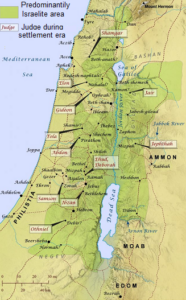 and historical studies, the period of the end of the exodus and reunification of Israel became known as the period of the judges, however it is possible both a biblical and historical reading as the birth of a proto-republic.
and historical studies, the period of the end of the exodus and reunification of Israel became known as the period of the judges, however it is possible both a biblical and historical reading as the birth of a proto-republic.
In the final period of Moses, he manages to see Canaan in the distance, he sets up a tent a little away from Moses where the biblical narrative says: “Moses asked for the tent and pitched it far away, outside the camp, and named it Tent of Meeting. So everyone who wanted to inquire of the Lord went out to the Tent of Meeting, which was outside the camp,” and when Moses went there, the people followed him with their eyes.
According to authors (Horowitz, 2005) and (Everdell, 2000) the period from 1250 BC. until 1030 B.C. It was characterized by the political, religious and military leadership of a leader who, by divine instruction, unified and directed the tribes of Israel and could be considered an Israelite Confederation (the ancient tribes of Israel after the exodus and return to the region of Canaan), were a type of republic ruled by judges, after the death of Moses and the leadership of Joshua.
Moses had previously sent 12 spies to the territory of Canaan, among them Joshua and Kalebe, on the way back they established a military strategy where first the famous siege of Jericho took place and then they conquered the mountains Betel and Gibeon.
After the conquest of the territory, the period of the twelve judges begins, who will govern the people and lead them in battles for the maintenance of the territory, and will settle in a territory that goes from Mount Herman in the north to Mount Haloque and Negeb in the south.
In this period there were still several fights, some of the judges are known in the literature as the last Judges: Samson, Eli and Samuel, , however the account of Deborah as a judge of Israel is unique, considering the patriarchal society that lived (Judges 4-5) , the last judge was Samuel, the great prophet who chose, at the request of the people, the first two kings: Saul and David.
This historical period was marked by the activity of the Old Testament prophets: Jeremiah, Ezekiel and Daniel, who tried to correct the course and destiny of their people. At the end of this period in history, the rise of the Assyrian Empire is also recorded, but it will reach the limits of Israel going as far as Egypt, under the leadership of Ashurbanipal in 690 BC. to 627 BC, in 609 BC. the first deportation of the Hebrew to Babylon takes place, and in 598 B.C. young king Jehoiachin, king of Judah, voluntarily surrenders.
Horowitz, Maryanne Cline (2005). «Republic». New Dictionary of the History of Ideas. 5. Detroit: Charles Scribner’s Sons.
Everdell, William R (2000). The End of Kings. A History of Republics and Republicans (em inglês). Chicago: University of Chicago Press.
The Kingdoms of Israel and Judah and History
As we have pointed out, it is a period of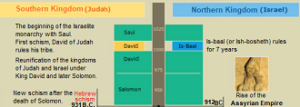 historical disintegration, and the need to group the Hebrews and also bring the divine message is explained by some scholars as the creation of this historical figure Joshua, who would be a name modified by Moses to Hosea (in Hebrew Yehoshua), as narrated, among others, by the biblical historian Robert Coote (2010).
historical disintegration, and the need to group the Hebrews and also bring the divine message is explained by some scholars as the creation of this historical figure Joshua, who would be a name modified by Moses to Hosea (in Hebrew Yehoshua), as narrated, among others, by the biblical historian Robert Coote (2010).
Joshua was the son of Nun, from the tribe of Ephraim, his book is the first roll of the “Books of the Prophets” according to the Judeo-Christian tradition, and he will be the leader of the battle of the fortress city of Jericho, which became eternalized as the famous “Siege of Jericho”.
However, the arrival in Canaan, after sending “spies” to recognize the land of Canaan, the promised land will be governed by judges in an attempt to maintain the religious and political order of the people that was in the process of fragmentation, among the main judges were Jephthah, Gideon, Samson and Samuel.
When Samuel got old, the sons “became greedy, accepted bribes and perverted justice”(Samuel, 8:3), something similar to the present day, the authorities went to Samuel and asked for kings like other peoples.
Samuel in a meeting with Saul who went out to look for his donkeys of the father Kish, who was a man of possessions from the tribe of Benjamin, there Samuel has a divine vision that that was the man chosen by God.
Saul should receive the prophet’s orders, but he reveals himself as having an immature and pagan faith, he wanted to offer sacrifices to God to obtain quick help for his interests, something similar to many Christians today, and despite many victories over the enemies of Israel, is deposed, and in his place is appointed David, who had fought the Philistine giant Goliath.
The division of the kingdom of Israel in the period that David ruled for a long time was only in the biblical narrative, but in 2015 the name Is-bosheth (or Is-baal) was discovered in an inscription by Israeli archaeologists (JNS.org, 2015).
For many centuries, the name Is-baal was found exclusively in the Bible. In 2015, however, Israeli archaeologists revealed to have discovered an inscription with this name on an ancient artifact for the first time “Eshbaal Ben Beda”.
Out of envy of David, Saul will try to kill him twice and David, when he has the opportunity, does not do it and forgives him, and Saul ends up committing suicide.
From David’s relationship with Bathsheba, wife of Uris that David sends to the front of the battle to die, Solomon will be born, who will govern his unified people with wisdom, but later approximately in the year 931 BC. a new Hebrew schism will occur.
This period of history closely approximates the period of the rise of the Assyrian Empire in 912 BC, in 612 BC. begins the decline of this empire and rise of the Persian Empire (550 BC).
JNS.org. Jewish and Israel news (june 16 of 2015). «King David-era inscription pieced together from broken jug»,
Exodus: historical and divine realities
The history of Ancient Egypt is generally divided into the Old Kingdom, from the great pyramids of the pharaohs Cheops, Chephren and Mycerinus, built near Memphis, the capital of Egypt at the time, then the Middle Kingdom (2100 BC to 1580 BC), the biblical character is born at the end of this period, and the New Kingdom (1580 BC to 715 BC), when they begin to face invasions until they are defeated by the Assyrians (6 70 BC).
divided into the Old Kingdom, from the great pyramids of the pharaohs Cheops, Chephren and Mycerinus, built near Memphis, the capital of Egypt at the time, then the Middle Kingdom (2100 BC to 1580 BC), the biblical character is born at the end of this period, and the New Kingdom (1580 BC to 715 BC), when they begin to face invasions until they are defeated by the Assyrians (6 70 BC).
In the biblical narrative one can divide the: first (1,1-15,21): coexistence in Egypt from Joseph to Moses; second (15.22-18.27): theophany and journey in the desert to Sinai; third (19-40): option for the divine proposal (Moses is called to lead the Exodus) and the covenant on Sinai.
It is interesting to observe the sequence that is repeated in the period of Abraham: leaving Ur in Mesopotamia, walking to Canaan, the alliance with Abraham (Gen 17:15-17) and the call to God in the offering of his son Isaac and the formation of the 12 tribes of Israel and the sale of Joseph to the Egyptians.
It is important to analyze the 10 plagues in Egypt in this biblical-historical context, a famous papyrus found in 1909 of an Egyptian called Ipuwer (or Ipuur which according to the scholar A. H. Gardiner was a typical name of the period 1850 BC -1450 BC), written in the form of a poem complains that women now have “furniture”, and girls have “mirrors” while the rich man lives in rags.
The papyrus is important for its connection with the biblical narrative, mentioning slaves fleeing Egypt and rivers of blood, but scholars speak of the Minoan eruption, which occurred during this period on the island of Santorini, near the island of Crete, which devastated a Minoan settlement.
The waves produced may have reached Egypt at the time, but the effect on the Nile delta is questioned by most fishermen, but the Ipuwer papyrus has a narrative close to the biblical one regarding the events in Egypt and, most importantly, narrates the beginning of the fall of the Empire through customs, a period that history calls the New Empire.
The 10 plagues of Egypt in the biblical narrative were: the river of blood, infestation of frogs, lice and flies, plague in cattle, ulcers in people, hailstones, infestation of locusts, darkness and the death of the firstborn of families.
As described in previous posts, the people of Israel guided by Moses will cross the desert, reach Canaan after four wars and stay there until a new exile in Babylon.
Egypt after the invasion of the Assyrians mentioned above, later they were dominated by the Persians in 525 BC. and by Alexander the Great in 322 BC, finally by the Romans in 30 BC.
Whether for purely historical reasons, social decay or divine intervention, empires fall from the oppression and tyranny they exercise, but there is a cycle of suffering.
The right question about evil
There is no doubt that there is cruelty, evil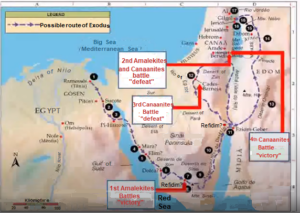 and indifference which is the great contemporary evil, but it is neither Manichaeism nor pure evil incarnate.
and indifference which is the great contemporary evil, but it is neither Manichaeism nor pure evil incarnate.
Always at all times agreements and wars were tried, often just for convenience or even war tactics, we have already posted about bad post-war agreements, such as Germany that came out humiliated from the first world war and we learned little from history.
We are making the route of the Jewish-Sumerian people until they get back to Canaan, where they left due to hunger to go to Egypt, before leaving Moses receives the divine message to address the Pharaoh, he goes with his brother Aaron, but what is the point knowing that the Pharaoh is merciless with the Israelite people? It’s just that the true divine message is always good seed for all peoples, that’s why the parable of the good seed, which should be the name of the parable of the tares and wheat.
Even going to talk to the pharaoh, the Israelites will be pursued, and then they will have to fight 4 battles in the flight through the desert, the battle of Rephidim where the marauding Amalekites win, the second again against Amalekites and Canaanites (so the location of Rephidim may be further north), the third a defeat against Canaanites and the 4th. the final victory.
See the reading (Mt 13,26,27): “When the wheat grew and the ears began to form, the weeds also appeared. The employees went looking for the owner and said to him, ‘ Lord, didn’t you sow good seed in your field? So where did the weeds come from?’ and the manager says not to uproot the weeds because it might uproot the wheat with it.
The divine seed is always good, but tares will always grow among the wheat and only from there can we correctly interpret the seed that falls on bad soil and among thorns and does not flower or bear fruit.
There is always hope and always a possibility for peace and harmony among nations and peoples.
The Burning Bush Episode
The story of the departure of the Israeli people from Egypt begins with an extraordinary event in which Moses leads Jethro’s flock, I am father-in-law and priest of Midian (history records him as a Druze) and near Mount Horeb he sees a burning bush that does not consumes it (Ex 3,3): “I am going to approach this extraordinary sight, to see why the bush does not consume”.
from Egypt begins with an extraordinary event in which Moses leads Jethro’s flock, I am father-in-law and priest of Midian (history records him as a Druze) and near Mount Horeb he sees a burning bush that does not consumes it (Ex 3,3): “I am going to approach this extraordinary sight, to see why the bush does not consume”.
There he receives the mission to remove his people from Egypt and the episode of the Escape from Egypt will begin, just as Abraham had withdrawn from an unlikely path from Ur of the Chaldeans, Moses will also make a route going through the region of Midian, in the biblical narrative this people it is also of Abrahamic origin since Abraham after Sarah’s death had Midian or Madian with his wife Keturah.
The historical record of the plagues of Egypt that preceded the flight can be found in the “Ipuwer papyrus” discovered in Egypt at the beginning of the last century, and taken to the Leiden museum in Holland, it was deciphered by A. H. Gardiner, and was found near the city of Avaris.
The Israelites at the beginning of the persecution are established in the warehouses of Rameses and Pitom, then they begin to migrate to Sucode, and from there they begin the flight to the Sinai desert, it will be in Horeb where Moses saw the burning bush that will receive the tablet of the law, the Ten commandments.
Jetro’s connection with the Midianites, he was a priest, is fundamental in the logistical support for the fleeing caravan, and this is probably the reason that they took a longer route, and we see from the map that it is likely that at the end of the persecution there will be a new one. miraculous episode that is the passage to be dried by the Sea.
The following story of the people will speak of many connections with the Moabites (Ruth was a Moabite and Lot would have given rise to the people through incest with his daughter) they lived in the desert so the road to Canaan will be even longer, the Egyptians still dominated the region, what was to be accomplished in days says the narrative that took 40 years.
In the history of that region, troglodytes lived, not in the folkloric sense that we know, but the fact that they lived in caves and houses dug in the mountains, as was also characteristic of the north in the well-known Cappadocia, region of so many mystics of antiquity.
Persecution and emigration always affected nations in wars.
Joseph of Egypt and Moises: the Noosphere
Joseph of Egypt before the Exodus of the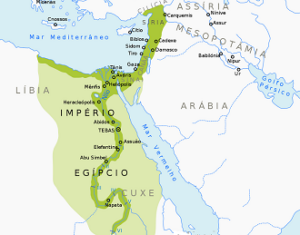 Israelites in Egypt, had two dreams the first that the brothers identified as “beams” who bowed to him, and the second that the Moon and eleven stelae (symbolizing the 11 tribes) bowed to him, and the brothers and even Israel do not believe in this, this cosmogony is present in the three great Abrahamic monotheistic religions.
Israelites in Egypt, had two dreams the first that the brothers identified as “beams” who bowed to him, and the second that the Moon and eleven stelae (symbolizing the 11 tribes) bowed to him, and the brothers and even Israel do not believe in this, this cosmogony is present in the three great Abrahamic monotheistic religions.
It will be Joseph in Egypt who will feed them in the time of the lean cows (the Pharaoh’s dream that Joseph unravels), there are no precise reports, however, the most likely is that this has taken place in the time of Pharaoh Sheshi I, and history records a period of famine and scarcity in the region.
But with the death of Joseph, the biblical narrative, now of the exodus says that the successor Pharaoh did not know Joseph and begins to fear, ordering that heavy work be established for the Hebrews until he orders to throw all the newborns in the Nile river, and then begins the saga of Moses.
Moses was born of the tribe of the Levites, who were priests and had no territory in Israel, he was the grandchild of Coate, son of Amram, with Jochebed his aunt and sister of Coate, due to the death of the newborns, he is raised in secret and after 3 months, when it is no longer possible to hide it, it is thrown into a basket prepared with tar and bitumen and thrown into the Nile, her older sister is on the lookout and sees that princess Henutmire, together with Yunet, when they hear a child crying the rescue, they know it’s a Hebrew child, but they decide to raise him.
It will be through Moses now, that the Hebrew people will return to Israel, in the biblical narrative it is when Moses was near Mount Horeb that he sees a burning bush (but it does not burn) and dresses in a veil because he cannot look in the face for her, who receives the mission to lead her people to Israel.
This period is called the Middle Kingdom, from 2100 BC. until 1580 BC, when Palestine and Nubia were conquered and where they found precious metals that stabilized the economy.
The Egyptians were polytheistic, and Moses marries Zipora (Exodus 2:21) who was a daughter of Jethro, a Druze priest, who claimed to believe in a single god, but for the Druze it is a type of universal mind, something close to the noosphere de Chardin, but reduced to “mind”.
This is followed in the biblical narrative by the plagues of Egypt and after many years, the Hebrews walk dry through the Red Sea.
The fear of change and not evolving
The great lesson of Joseph of Egypt is that 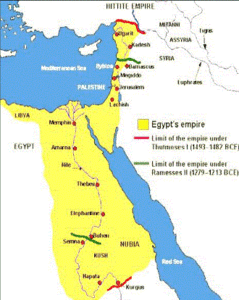 under an apparent “slavery” or difficulty is hidden a necessary change for peoples and nations to develop, in history the departure of the Hebrew people from the “promised land” is even desired by God according to the biblical text in Genesis (Gn 46,4): “I will go down with you to Egypt and I will bring you back from there when you return; and it is Joseph who will close your eyes”, he says to Jacob (Israel) and asks him to take all his relatives.
under an apparent “slavery” or difficulty is hidden a necessary change for peoples and nations to develop, in history the departure of the Hebrew people from the “promised land” is even desired by God according to the biblical text in Genesis (Gn 46,4): “I will go down with you to Egypt and I will bring you back from there when you return; and it is Joseph who will close your eyes”, he says to Jacob (Israel) and asks him to take all his relatives.
The Egyptian Civilization was formed from the mixture of different peoples, among them, the Hamites, the Semites and the Nubians, who emerged in the Paleolithic Period, and it is probable from recent archaeological research that the Jews went to make their settlements in the Hyksos region who were defeated by the Egyptians.
In the year 3200 B.C. Menes unified the kingdoms of lower and upper Egypt forming the Egyptian Empire and Menes being its first emperor and pharaoh, the Jews went there later in the year 1750 BC. and stayed until 1250 BC. as slaves because they were feared by the pharaohs.
Most likely it was during the reign of Pharaoh Ramses was the son of Pharaoh Sehti I and Queen Tuya. He was the third pharaoh of the Nineteenth Dynasty of Egypt. At the age of 10, Ramses was sure that he would assume the throne when he was recognized as the “eldest son of the king”, having fought at a young age alongside his father in the conquest of Lebanon (see the map between the blue and red lines).
The last pharaoh was Xerxes I, famous for the battle of Thermopylae, where the Greek general Leonidas would have fought with only 7000 men, and prepared an ambush in a pass between Thermopylae mountains, but the Greeks were betrayed and the strategy was discovered.
Also from this period, the repentance of the brothers of Jacob (Israel) who struggles “with God”, and of the brothers, especially Judah, who regrets having sold his brother Joseph as a slave, shows how in the story of an evil one can take a good if errors are recognized.
Even the bad seed can flourish even if it is planted in bad but fertilized soil.

